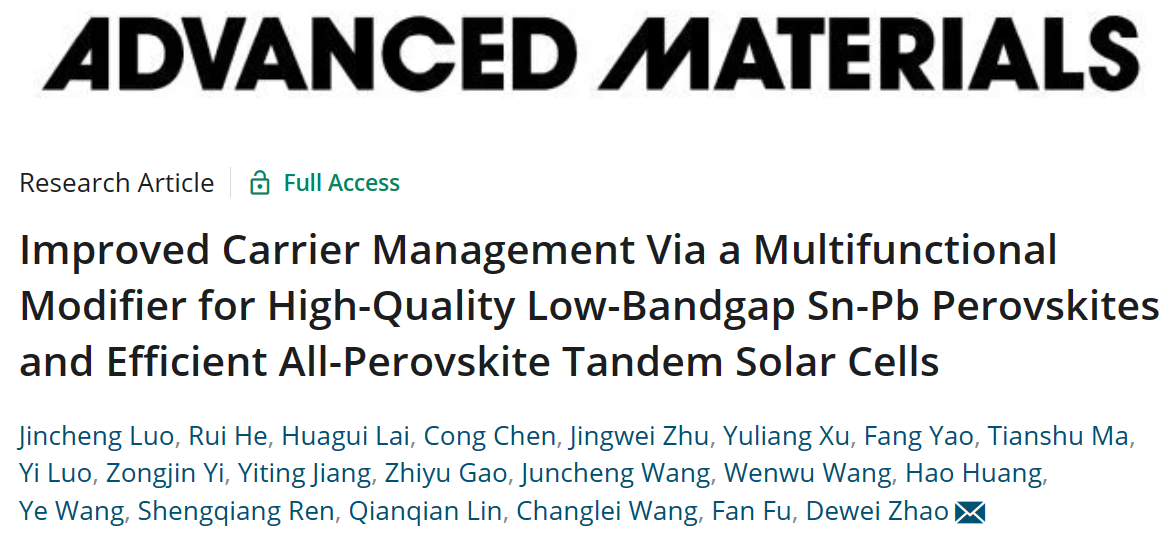The Advanced Materials published online the research results of Professor Dewei Zhao's team from the College of Materials Science and Engineering, entitled "Improved Carrier Management via a Multifunctional Modifier for High-Quality Low-Bandgap Sn-Pb Perovskites and Efficient All-Perovskite Tandem Solar Cells" on March 13. The team proposed a strategy of synergistic interaction between calcium titanate phase and interface, effectively regulating the carrier dynamics in devices. As a result, the low-bandgap tin-lead perovskite solar cells and all-perovskite solar cells achieved photoelectric conversion efficiencies of 22.15% and 26.16% respectively.

“All-perovskite tandem solar cells (TSCs) hold great promise in terms of ultrahigh efficiency, low manufacturing cost, and flexibility, stepping forward to the next-generation photovoltaics. However, their further development is hampered by the relatively low performance of low-bandgap (LBG) tin (Sn)-lead (Pb) perovskite solar cells (PSCs). Improving the carrier management including suppressing trap-assisted non-radiative recombination and promoting carrier transfer is of great significance to enhance the performance of Sn-Pb PSCs. Herein, we report a carrier management strategy for using cysteine hydrochloride (CysHCl) simultaneously as a bulky passivator and a surface anchoring agent for Sn-Pb perovskite. CysHCl processing effectively reduces trap density and suppresses non-radiative recombination, enabling the growth of high-quality Sn-Pb perovskite with greatly improved carrier diffusion length of > 8 μm. Furthermore, the electron transfer at the perovskite/C60 interface is accelerated due to the formation of surface dipoles and favorable energy band bending. As a result, these advances enable the demonstration of champion efficiency of 22.15% for CysHCl-processed LBG Sn-Pb PSCs with remarkable enhancement in both open-circuit voltage and fill factor. When paired with a wide-bandgap perovskite subcell, we further demonstrate a certified 25.7%-efficient all-perovskite monolithic tandem device.” (Abstract)
Jincheng Luo, a Class 2020 master program student is the first author of the thesis, and Professor Dewei Zhao is the corresponding author of the thesis. The College of Materials Science and Engineering of Sichuan University is the only corresponding unit for the paper.
The research was funded by the National Key Research and Development Plan, the National Natural Science Foundation of China, the Engineering Characteristic Team of Sichuan University,the Sichuan Provincial Science and Technology Plan Project, and the special fund for basic scientific research business expenses of central universities.
https://onlinelibrary.wiley.com/doi/10.1002/adma.202300352
